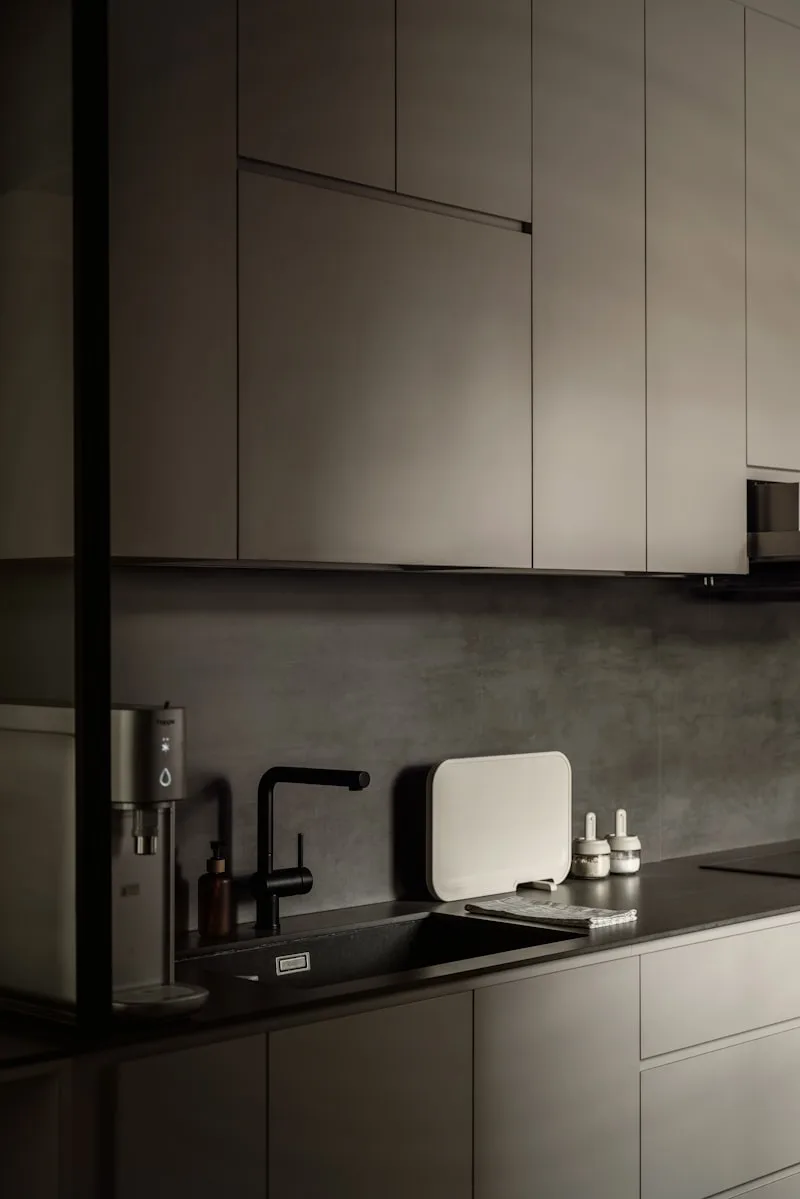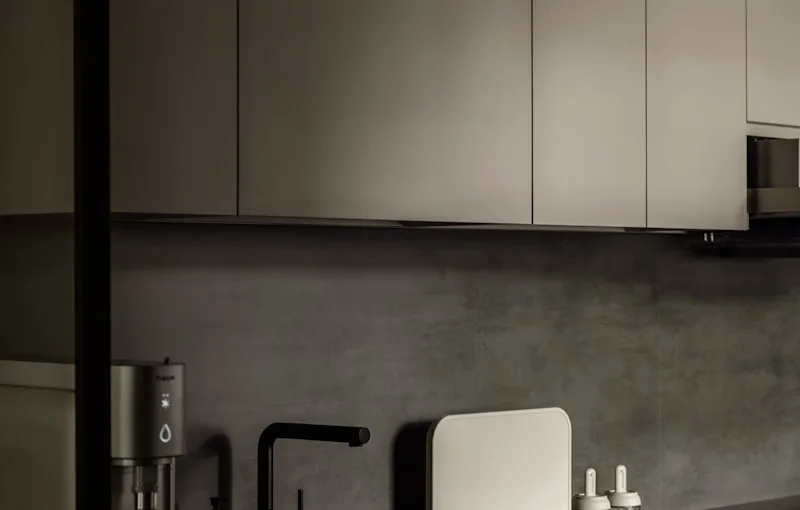First things first, gather your supplies. You’ll need a paint stripper, some old rags, a putty knife, and safety gear like gloves and goggles. Trust me, you don’t want to end up with paint stripper on your skin! Now, let’s get to work. Apply the paint stripper generously to the cabinet surface. It’s like slathering on sunscreen before a day at the beach—make sure you cover every inch.
After letting it sit for the recommended time, grab your putty knife and start scraping. It’s almost like digging for treasure; you’ll be amazed at how easily the paint comes off. If you hit a stubborn spot, don’t fret! Just reapply the stripper and give it a little more time to work its magic.

Once you’ve scraped off the majority of the paint, it’s time to clean up. Use a rag dampened with mineral spirits to wipe down the cabinets. This step is crucial; it’s like giving your cabinets a refreshing shower after a long day. You’ll want to ensure all the residue is gone before moving on to the next phase.
Revive Your Kitchen: Expert Tips for Effortlessly Removing Paint from Cabinets
First off, let’s talk about the power of heat. A heat gun can be your best friend in this situation. It’s like a magic wand that softens the paint, making it peel away effortlessly. Just remember to keep it moving to avoid scorching the wood. Think of it as giving your cabinets a warm hug—just enough to loosen things up!
Next, consider using a chemical paint stripper. It sounds intimidating, but it’s really just a fancy way of saying, “Let’s make this easier.” Apply it generously, let it sit for a bit, and watch the paint bubble up like popcorn. Just be sure to wear gloves and work in a well-ventilated area—safety first!
Now, if you’re feeling a bit more hands-on, a good old-fashioned scraper can do wonders. It’s like using a spatula to flip pancakes; you need the right angle and a gentle touch. Scrape away the softened paint, and you’ll be amazed at how quickly your cabinets start to shine through.
Lastly, don’t forget about sanding. It’s the cherry on top of your kitchen revival sundae. A light sanding after removing the paint will smooth out any rough patches and prepare the surface for a fresh coat of paint or stain. Think of it as giving your cabinets a spa day—refreshing and rejuvenating!
From Drab to Fab: The Ultimate Guide to Stripping Paint from Kitchen Cabinets
First things first, let’s talk about the tools you’ll need. Think of this as your DIY toolkit for success. You’ll want a good paint stripper, some scrapers, and protective gear—gloves and goggles are a must! Just like a knight gearing up for battle, you need to be prepared for the task ahead.
Now, onto the fun part: the actual stripping! Start by removing the cabinet doors and hardware. It’s like giving your cabinets a little vacation while you work your magic. Apply the paint stripper generously, and let it sit for a while. This is where the magic happens! The paint will start to bubble and lift, making it easier for you to scrape it off. It’s almost like peeling a sunburn—satisfying, but you want to be gentle!
Once you’ve stripped away the old paint, give your cabinets a good sanding. This step is crucial; it’s like giving your cabinets a fresh face before the big reveal. Sanding smooths out any rough patches and preps the surface for a new coat of paint or stain.
Finally, don’t forget to clean up! A clean workspace is essential for a fab finish. With a little patience and elbow grease, your kitchen cabinets can go from drab to fab, making your kitchen the envy of all your friends. Who knew a little paint stripping could lead to such a transformation?
DIY Delight: How to Safely Remove Paint from Your Kitchen Cabinets
First things first, safety is key. You wouldn’t jump into a pool without checking the water, right? So, gear up with gloves, goggles, and a mask. You want to protect yourself from any fumes or dust that might come your way. Now, let’s get to the fun part—choosing your method!
If you’re dealing with a few layers of stubborn paint, a heat gun can be your best friend. It’s like a hairdryer on steroids, softening the paint so you can scrape it off easily. Just keep it moving to avoid scorching the wood. Prefer a gentler approach? Try a chemical paint stripper. It’s like a magic potion that dissolves paint, but make sure to follow the instructions carefully.
Now, here’s a little tip: always test a small area first. Think of it as a dress rehearsal before the big show. You want to ensure that the method you choose won’t damage the wood underneath. Once you’ve stripped away the old paint, give your cabinets a good wash with soap and water to remove any residue.
Transform Your Space: Step-by-Step Methods to Remove Paint from Cabinets
First things first, gather your supplies. You’ll need a paint stripper, some good-quality scrapers, sandpaper, and safety gear like gloves and goggles. Think of this as your toolkit for a mini home makeover adventure! Once you’re geared up, it’s time to prep your cabinets. Remove all hardware and doors, and give everything a good clean. This is like setting the stage for a grand performance—everything needs to be just right.
Now, apply the paint stripper according to the instructions. It’s like spreading frosting on a cake; you want an even layer. Let it sit for the recommended time, and then grab your scraper. As you peel away the old paint, it’s almost like unwrapping a gift—you never know what beautiful wood might be hiding underneath!
After you’ve stripped the paint, it’s time to sand. This step is crucial for a smooth finish. Think of it as polishing a diamond; you want that shine to really pop! Use fine-grit sandpaper to smooth out any rough spots, and don’t forget to wipe away the dust afterward.
Finally, if you’re feeling adventurous, consider applying a new stain or paint to give your cabinets a fresh look. It’s like giving your space a brand-new outfit! With a little effort and creativity, you can transform your cabinets from drab to fab, making your space feel brand new. So, are you ready to roll up your sleeves and get started?
Say Goodbye to Old Paint: Innovative Techniques for Kitchen Cabinet Restoration
Imagine walking into your kitchen and feeling like you’ve stepped into a brand-new room. One of the most exciting methods is the use of chalk paint. This magical concoction adheres beautifully to almost any surface, giving your cabinets a chic, matte finish. Plus, it’s super forgiving—if you make a mistake, just sand it down and try again!
Another game-changer is the application of gel stains. If you love the wood grain but hate the color, gel stains can transform your cabinets without losing that beautiful texture. It’s like putting on a fresh coat of lipstick; it enhances what’s already there while giving it a fabulous new hue.
And let’s not forget about the power of hardware! Swapping out old knobs and handles for modern, stylish options can make a world of difference. Think of it as giving your cabinets a trendy outfit change. You’d be amazed at how a simple update can elevate the entire look of your kitchen.
If you’re feeling adventurous, consider a two-tone approach. Painting the upper cabinets one color and the lower ones another can create a stunning visual contrast. It’s like a breath of fresh air, adding depth and personality to your kitchen.
So, why let those old cabinets drag you down? With these innovative techniques for kitchen cabinet restoration, you can turn your kitchen into a space that reflects your style and makes you excited to cook!
Breathe New Life into Your Cabinets: Effective Paint Removal Strategies
First off, let’s talk about the power of a good paint stripper. Think of it as a magic potion that can dissolve layers of old paint, revealing the beautiful wood underneath. Just apply it generously, let it sit for a while, and watch the paint bubble up like a volcano! It’s satisfying, isn’t it? But remember, safety first! Always wear gloves and work in a well-ventilated area.
If you’re feeling a bit more hands-on, sanding is another fantastic option. Picture it like giving your cabinets a gentle exfoliation. Grab some sandpaper and start smoothing out those rough patches. It’s a bit of elbow grease, but the results can be stunning. Plus, you’ll get a workout while you’re at it!
For those who prefer a more modern approach, a heat gun can be a game-changer. It’s like a hairdryer on steroids! The heat softens the paint, making it easy to scrape off. Just be careful not to scorch the wood—nobody wants a cabinet that looks like it’s been through a fire!
Lastly, don’t forget about the power of patience. Sometimes, the best things take time. Whether you’re stripping, sanding, or heating, give your cabinets the love they deserve. With these effective paint removal strategies, you’ll transform your tired cabinets into stunning focal points that will have everyone asking, “Where did you get those?”
Frequently Asked Questions
What are the best methods to remove paint from kitchen cabinets?
To effectively remove paint from kitchen cabinets, consider using a combination of methods. Start with a paint stripper, which can dissolve the paint without damaging the wood. For a more natural approach, try using vinegar or baking soda mixed with water. Sanding is another option, but it requires caution to avoid damaging the surface. Always follow up with thorough cleaning and refinishing to restore the cabinets’ appearance.
Can I use vinegar to strip paint from cabinets?
Vinegar can be an effective and eco-friendly option for stripping paint from cabinets. Its acidic properties help to break down the paint, making it easier to scrape off. To use, apply heated vinegar to the painted surface, let it sit for a few minutes, and then gently scrape away the loosened paint. This method is best for small areas and may require multiple applications for thicker layers.
What tools do I need for removing paint from kitchen cabinets?
To effectively remove paint from kitchen cabinets, you will need a few essential tools: a paint stripper or remover, a putty knife or scraper for peeling off the paint, sandpaper or a sanding block for smoothing the surface, a wire brush for stubborn areas, and protective gear such as gloves and goggles. Additionally, having a drop cloth to protect your workspace and a vacuum or brush for cleanup will be beneficial.
How do I safely use chemical paint removers on cabinets?
To safely use chemical paint removers on cabinets, ensure proper ventilation by working in an open area or using fans. Wear protective gear, including gloves, goggles, and a mask to avoid skin and respiratory irritation. Apply the remover according to the manufacturer’s instructions, using a brush or cloth, and allow it to sit for the recommended time. Test a small, inconspicuous area first to check for adverse reactions. After removal, clean the surface thoroughly with water or a recommended neutralizer to eliminate any residue.
How can I prevent damage to the wood while removing paint?
To prevent damage to wood while removing paint, use a gentle paint stripper designed for wood surfaces. Apply it with a soft brush and allow it to sit for the recommended time. Use a plastic scraper to carefully lift the paint without gouging the wood. Always test the stripper on a small, inconspicuous area first. After removal, clean the surface with a damp cloth and allow it to dry completely before sanding or refinishing.
